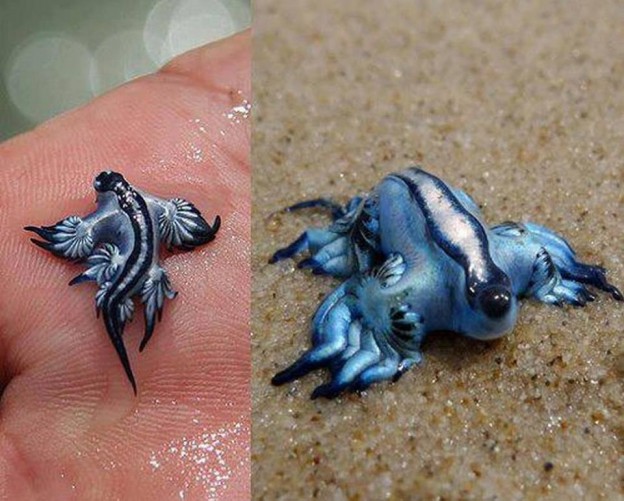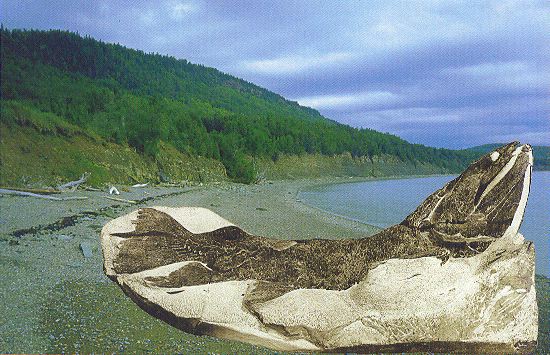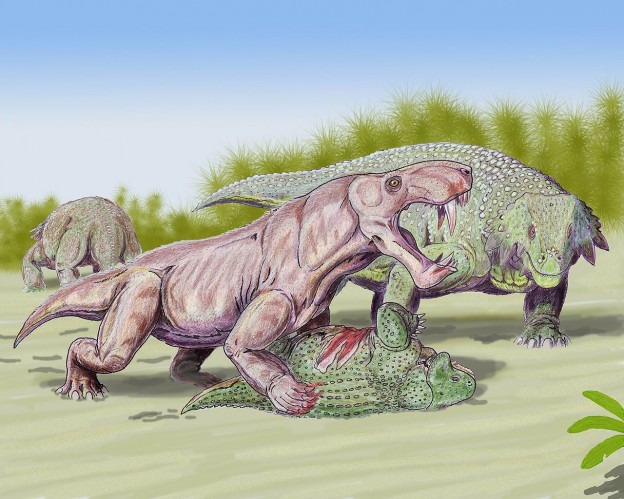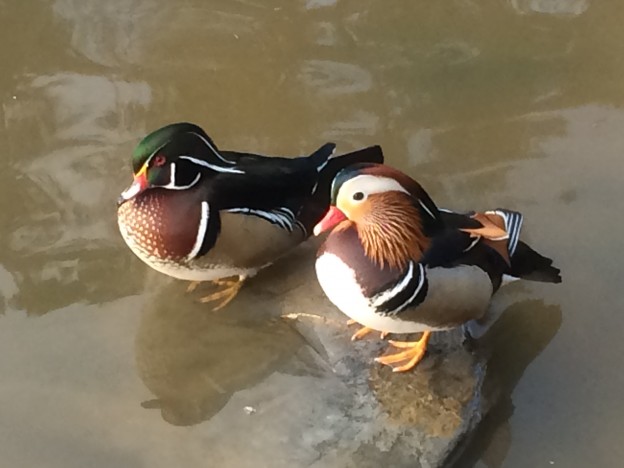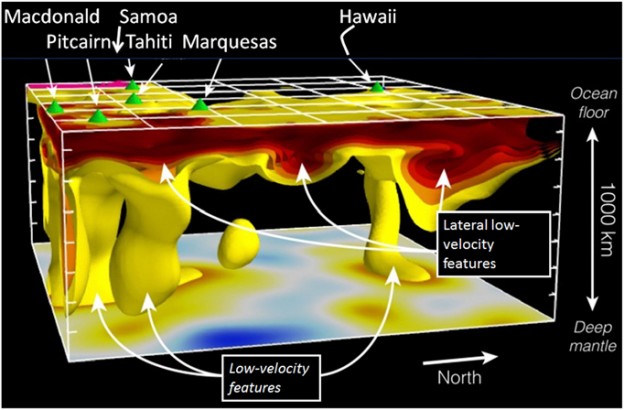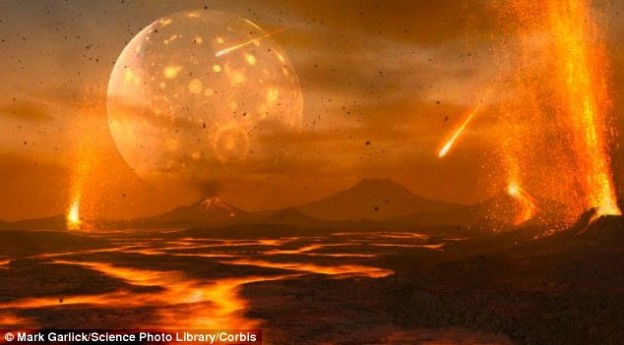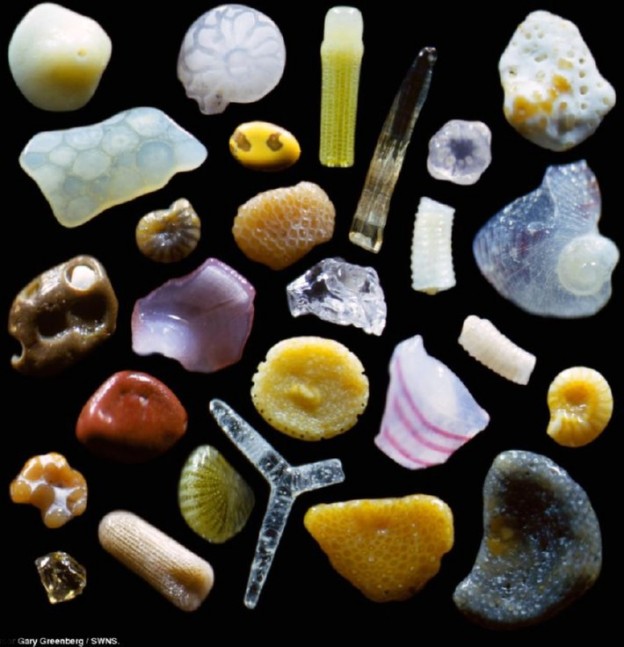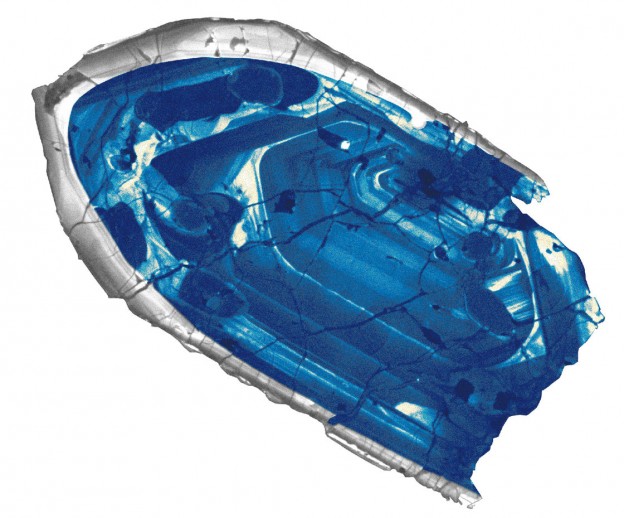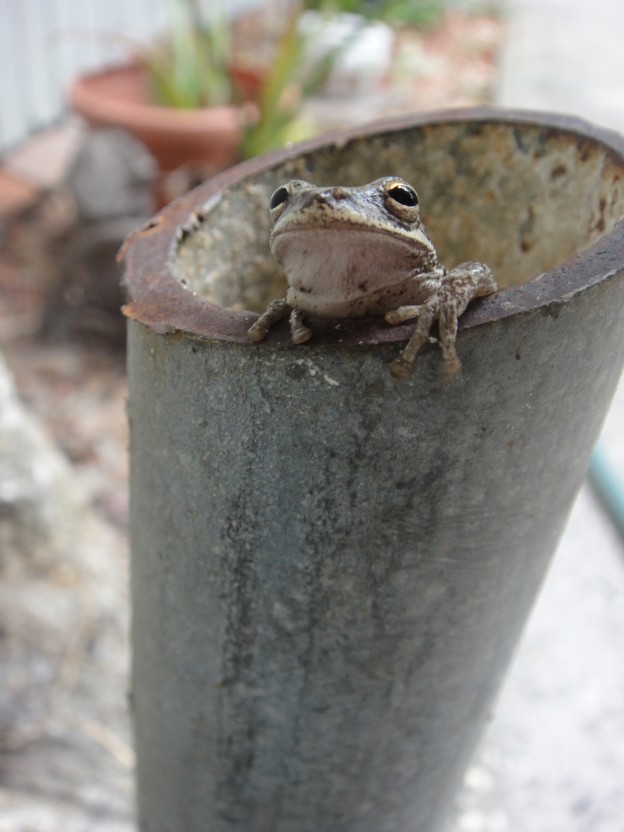Below are examples of the symbols used in geologic diagrams and maps to represent specific kinds of rocks. If bedding, cross-bedding, ripples, fossils, distortion, or certain materials are present in the rock, the symbols are altered. To download the complete list of standard symbols, click here. Read more
Geologic Map Symbols
Glaucus atlanticus: beautiful blue sea slug, or Pokemon?
Glaucus atlanticus (commonly known as the sea swallow, blue angel, and blue dragon) is a small, blue, pelagic sea slug. As I discussed in my post on why gastropods are awesome, this nudibranch can feed on cnidarians (like jellyfish) and harvest their nematocysts (stinging cells)—so this gorgeous slug not only looks like a Pokemon, but it can actually copy other creatures' moves!
Five fossils important for understanding tetrapod evolution
Tetrapods are four-limbed vertebrates that evolved from lobe-finned fish during the Devonian (395 million years ago), invading the land and ultimately leading to today's the amphibians, reptiles, birds, and mammals.
Read more →
Amniotes of the Late Paleozoic & Mesozoic
Amniotes are tetrapods (four-limbed vertebrates) whose eggs contain amnions, an adaption that keeps them from drying out on land; they first appeared during the Carboniferous. There are two main groups, synapsids and sauropsids (anapsids, diapsids, and euryapsids), which differ in their evolutionary history and their skull morphologies (specifically, the types of fenestrae or "holes" in the skull). For a much more detailed look at the evolution and taxonomy of aminotes, check out Palaeofiles from the University of Bristol.
Beautiful ducks of Duke Gardens, Durham, NC
One of the highlights of studying at Duke was walking through the Duke Gardens and observing the daily habits of the many ducks that frequent the pond in the Asiatic Arboretum. I came to realize that they all had very active lives and interesting relationships. Read more →
Volcano news: how slopes affect lava flows, challenge to traditional volcano model, Mauna Loa waking up
Easy Science: The Great Oxygenation Event
The Earth wasn't always a friendly place to live. Not only was it covered in lava and constantly eruption, its atmosphere was chocked with volcanic gases like carbon dioxide and sulfur dioxide. How and when did the atmosphere reach its current oxygen-rich state? This post will walk through the processes as well as some of the evidence that allows us to understand what happened. While I describe as a series of apparently discrete steps, it's important to remember that these processes sometimes overlapped and that they occurred over a span of time, often millions or billions of years.
Sand grains under the microscope
From a distance, sand can look homogenous and quite frankly, boring. Scoop up a handful and examine it closely—or better yet, magnify it 100 times plus—and you realize just how many different shapes, colors, and materials can exist. Volcanic material, coral fragments, quartz grains, foraminifera shells, and more all tell different stories about its origins. Read more →
How zircons help us date and understand the ancient earth
Small and unimposing at just fractions of a millimeter across, the igneous silicate mineral zircon (ZrSiO4) lays its claim to fame as the oldest earth material at 4.4 billion years old. The secret to zircon's success is its durability and tenacity. When other minerals break apart or turn into other minerals, zircon bravely trudges on. My former professor, Dr. Alex Glass of Duke University, described zircon as "the thing that never leaves," comparing zircon to a person who awkwardly remains at a house party long after all the other guests have left. He suggested that rather than diamonds, zircons should be the ultimate symbol of everlasting love. Read more →
Identifying frogs and toads in NC
Although I often miss the mountains, one of the benefits of living in North Carolina's Coastal Plain is the tree frogs. During my summer at Duke's Marine lab in Beaufort, we would often return to our apartment to find the building and our door absolutely covered in frogs; in the morning, they'd be all over the car, and we'd have to pull them out of the tires. They don't seem to be quite as prevalent in Greenville, but there are plenty (they seem to like sitting on the porch, where they can taunt the cat). During a trip to Washington, NC, we ran across this stunning green little guy, and I decided to find out what he was. Read more →


